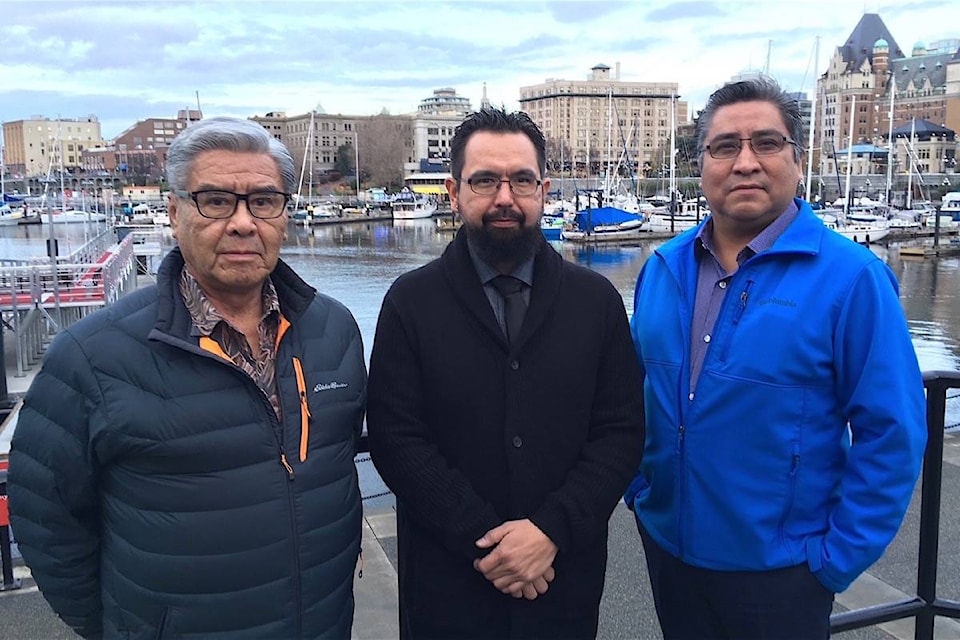I’ve been writing about salmon farming off and on for more than a decade, and was one of the first to report on the “de-marketing” campaign backed by U.S. charitable foundations that was revealed using U.S. tax records by former salmon farm employee Vivian Krause.

It’s been a propaganda parade, continuing this year with an occupation of two salmon arms off northern Vancouver Island and a sophisticated media campaign pressing unverified claims of viral contamination. Even B.C. Agriculture Minister Lana Popham, a long-time anti-aquaculture protester, jumped on the bandwagon.
Most media coverage has been led by protesters, this year including Paul Watson’s Sea Shepherd Society, backed by celebrities Pamela Anderson and Martin Sheen. The target was Marine Harvest, one of a group of Norwegian companies that have raised Atlantic salmon on the B.C. coast for 30 years.
What is striking is not so much the lazy pack journalism, it’s the events that are not covered. A few recent examples:
• Marine Harvest paid the Heiltsuk First Nation for community support and employment training, and two days later Heiltsuk announced, on Twitter, it is terminating a hatchery agreement that took years to negotiate.
• Another long-time aquaculture operator, Cermaq, was invaded Dec. 2 by protesters who dived into a pen of adult salmon and grabbed some to hold up for fundraising visuals, claiming they were tainted by a diesel spill.
What is treated as news? A weeks-old “plastic bag spill” from a “fish farm” that is actually one of the most successful chinook salmon hatcheries on the West Coast.
What is not reported is that this hatchery has tripled the chinook smolt survival rate, providing more for chinook sports fishing and the primary diet of endangered orcas.
And what is seldom mentioned is the employment provided in remote regions by salmon farms, many of which have operating and employment arrangements with Indigenous communities for up to 30 years.
RELATED: B.C. salmon farm value growing rapidly
I spoke with three Indigenous salmon farm workers who visited the B.C. legislature in late November.
James Walkus (JW) is a Port Hardy fisherman, whose two boats are also used to move fish to processing for Marine Harvest.
Maurice Isaac (MI) is a Tlowitsis Nation member, site manager for Marine Harvest’s salmon farm at Midsummer Island, which was one of the protest targets.
Gary Hall (GH) is a former elected Chief Councillor of the Kitasoo/Xaixais First Nation at Klemtu, which has a long-standing operating agreement with Marine Harvest. Here is an edited transcript of our conversation.
Indigenous #aquaculture workers speak out about protests targeting their jobs. Interview coming shortly. #bcpoli pic.twitter.com/v0rBGlsZ0Q
— Tom Fletcher (@tomfletcherbc) December 6, 2017
TF: What was the effect of the occupation?
JW: The disruption didn’t stall us at all. They were just kind of being a nuisance.
MI: They were at my site. They tried to block the offload of the last two loads of fish, so we suspended transfers of fish from one site to the other, in hopes to get some dialogue with First Nations and some agreements, so some positives come out of it. So we put it on hold and we’re going to resume at some point, moving the fish and stocking my site fully as planned.
TF: How many protesters were there at Midsummer at any one time?
MI: There were always at least three. At some points I’d say there were 20-plus. There were always people coming with supplies and food. In the summer they were just coming and hanging out, sitting on the cages. As soon as I started entering fish, they came and they would just wait all day to see if there was going to be an offload.
TF: Were these local people you recognized?
MI: The majority of them, I know who they are. There were some Americans [in mid-November], but I don’t know who they were. There was a ship from Vancouver called My Girl, nice big yacht, just hanging out. [My Girl is a 50-metre super-yacht built in Washington in 2016].
TF: Gary, what was your experience?
GH: I was hired by Marine Harvest to engage the community members. The community has actually been accepting. They know that I’ve been working with Marine Harvest. There are a few people who are distancing themselves from me, but I haven’t had any really negative feedback.
The only person who takes little jabs at me is actually not a First Nations person, and not from Alert Bay. He’s there documenting a totem pole that they’re doing. He’s from Belgium.
MI: Wayne Alfred.
JW: It’s micro-tourism. They’re going to build a little miniature village over there.
TF: There’s another guy named Ernest Alfred involved, is he related?
MI: Yes. I’m actually related to Ernest myself. So he says, anyway. The day he occupied Swanson Island, the first day he was there, I arrived there and he said, “hey, there’s my cousin Maurice.”
TF: He’s a hereditary chief?
MI: He’s the representative, he’s the lead guy. He’s not a negotiator. He’s stated that many times. He’s a bad representative of our people. He’s disrespectful.
TF: Licences for 18 Broughton Archipelago salmon farms are coming up for renewal by the province. Do you think you’re getting a fair assessment?
MI: I don’t feel it’s fair from their side. The protesters aren’t actually showing any real science and facts, other than some cherry-picked pictures that they spent hours and hours trying to capture.
TF: Nobody talks about commercial fishing. And it’s always the sockeye that are hit the hardest.
JW: In 2010, that was the second largest sockeye run in history.
TF: Right in the middle of the Cohen Commission [the 2010 federal inquiry that found a long-term decline of sockeye runs from Washington up to Alaska, including areas with no salmon farms].
JW: Then 2014 it was huge again.
@tomfletcherbc
tfletcher@blackpress.ca
Like us on Facebook and follow us on Twitter.



